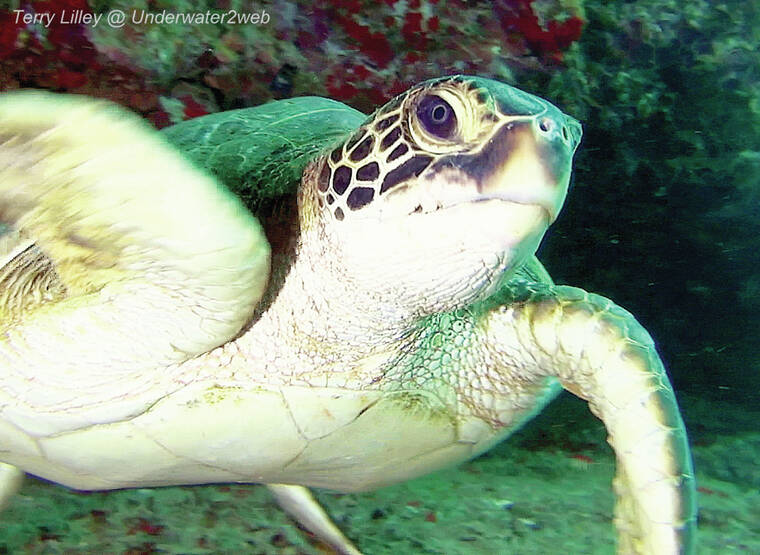Just think how wonderful it would be if you had two boys in your family and you decided you would like a girl for your third child, and the mom could just decide on her own what sex child she wanted.
In old Hawai‘i, women that wanted a certain sex baby would eat a certain wrasse fish species to produce a boy or girl, but it was not always a guarantee. Our female sea turtles can determine the sex of their offspring and pretty much guarantee what sex babies she will have. This is a trait that us scientists are just beginning to understand and our honu are once again showing us how amazing they are and why we need to protect them and their habitat.
Most people here in Hawai‘i have noticed that our beaches are getting smaller, not larger. Our beaches are eroding very quickly. The sand on our beaches is made from ground up coral and shells and our coral reefs are getting smaller every year, so there is not as much sand being produced. This along with rising sea levels is reducing the size of our beaches and this trend is messing up the ability of the female sea turtle to choose what sex she wants to produce.
Sea turtles, tortoises and some lizard species can produce different sexes of their offspring based on the temperature of the sand the female lays her eggs in. When the female sea turtle crawls out of the water up on the beach at night, she can detect the temperature of the sand as she goes up the beach.
She will dig a hole in the sand to lay her eggs and depending on how deep that hole is will determine the sex of her babies. The basic rule for honu is “hot checks versus cool dudes.” If she lays her eggs at 86 percent, it will take about 60 days for them to hatch and the sex ratio is about two males for every female. This is good because when sea turtles are ready to breed, she will mate with several males. This ensures that all 50 to 100 of her eggs will get fertilized.
Female sea turtles know that for their population to stay healthy during times of ocean changes, she sometimes will want only females to hatch. When this is the case, she will lay her eggs shallower in the sand, which has a warmer temperature and all the babies will hatch out as female.
Sometimes the sea turtle population will need more males, so when this happens the female will lay her eggs in deeper sand, which will guarantee that her babies will hatch out as males. This whole process of determining the sex of her offspring is truly amazing and shows that the female honu understands the needs of the entire sea turtle population, and she alone can determine future sex rations to keep that population healthy.
The problem today with the disappearing beaches is forced “feminization.” On many beaches now there is not enough sand left for the female to dig deep enough to produce males. so she has to lay her eggs in shallow sand and only females will hatch out. This is very dangerous for the future turtle populations because too many females and fewer males will cause less mating ability and the turtles are now laying infertile eggs, which could cause the entire turtle population to collapse in the future.
What can we humans do to help out our honu population and give the female turtles once again the ability to determine the sex of her babies? We can stop building structures on the beach and we can stop building seawalls.
We can move structures off of the beach and allow nature to rebuild a wider beach. We can protect the beaches that are wide and deep, so the turtles have a good place to lay eggs and we can take better care of our coral reefs so there is more sand being made then washing away.
You can learn all about our Hawaiian sea turtles in my hour long educational movie up on YouTube at Underwater2web and help protect our turtle population by protecting our beaches.
•••
Terry Lilley is a marine biologist living in Hanalei Kaua‘i and co-founder of Reef Guardians Hawai‘i, a nonprofit on a mission to provide education and resources to protect the coral reef. To donate to Reef Guardians Hawaii go to www.reefguardianshawaii.org.


